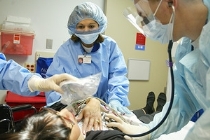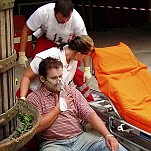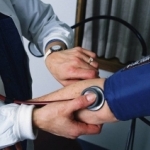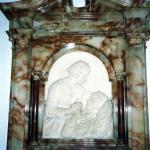 Emergency care for pulmonary edema
Emergency care for pulmonary edema

Let's analyze what emergency care for pulmonary edema is required from a nurse. But first, let's refresh our knowledge about pulmonary edema, the causes and mechanism of occurrence, the clinical picture.
Pulmonary edema is a severe, life-threatening pathological condition in which fluid leaks from the blood and lymphatic vessels into the alveoli. This condition is the result of stagnation in the pulmonary circulation, which can be caused by the following reasons:
- cardiogenic: acute myocardial infarction, heart defects, postinfarction cardiosclerosis, aortic aneurysm, hypertension, atherosclerotic cardiosclerosis and other diseases of the cardiovascular system;
- non-cardiogenic: pneumothorax (air entering the chest cavity), acute respiratory failure with status asthmaticus, a foreign body in the respiratory tract, inflammatory diseases of the respiratory organs - pneumonia, bronchitis, tumor diseases of the respiratory tract, tuberculosis, severe intoxication in infectious diseases (measles, whooping cough and others ), chest trauma.
The liquid that has penetrated into the alveoli of the lungs - transudate - is very rich in protein and, when in contact with air during breathing, gives vigorous foaming. Thus, a large amount of foamy sputum is formed and the volume of the respiratory surface decreases, which threatens asphyxia.
Clinical picture of pulmonary edema
Most often, pulmonary edema develops at night. There is an attack of suffocation, characterized by difficulty in both inhalation and exhalation. The patient often takes a forced position - sits down on the bed with his legs down. There is shortness of breath up to 30-40 respiratory movements per minute.
Initially, a dry cough in the future is more often accompanied by the release of foamy pink sputum. The condition is accompanied by tachycardia, sometimes arrhythmia, while the pulse is tense.
Dyspnea is accompanied by wet rales, which are initially auscultated, and as the edema develops, they are heard by the ear at a distance.
Characterized by pain in the chest of a pressing, compressive nature, pallor and cyanosis (cyanosis) of the skin.
The patient is excited, experiences fear of death, there may be confusion.
Tactics of a nurse with pulmonary edema
- Immediately call a doctor to determine further tactics.
- Help the patient to take the most comfortable position - sitting, with his legs down. Thus, the work of the pulmonary circulation will be somewhat unloaded.
- The patient should be reassured, relieve strong emotional stress.
- Unbutton tight clothing (belt, collar, bra for women) to facilitate lung excursion.
- Provide fresh air for easier breathing.
- Provide monitoring of the patient's condition: measure blood pressure, pulse, respiratory rate.
- Give the patient 1 tablet of nitroglycerin under the tongue to improve myocardial nutrition.
- After 5 minutes, measure blood pressure again and at systolic pressure above 90 mm Hg. Art. repeat giving nitroglycerin.
- To unload the work of the pulmonary circulation: apply venous tourniquets to all or 2 limbs. It is necessary to ensure that the tourniquets do not squeeze the arteries - check for the presence of a pulse on the periphery of the limb. The tourniquets are applied for 15-20 minutes and removed one by one and gradually.
- To reduce hypoxia, the patient should be given 100% humidified oxygen.
- Further tactics to coordinate with the doctor.
It is very important for the nurse to notice the first symptoms of incipient pulmonary edema in time. As already mentioned, this condition occurs most often at night. Therefore, during the period of night duty, one should vigilantly monitor the condition of patients under the supervision of a guard (ward) nurse. Timely emergency care for pulmonary edema saves the patient's life.





